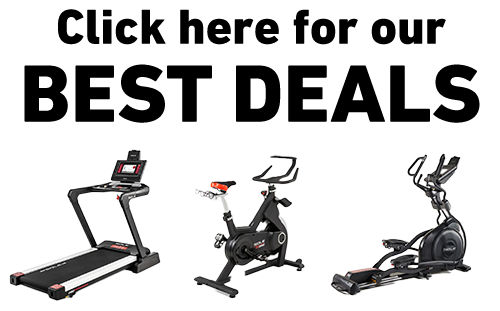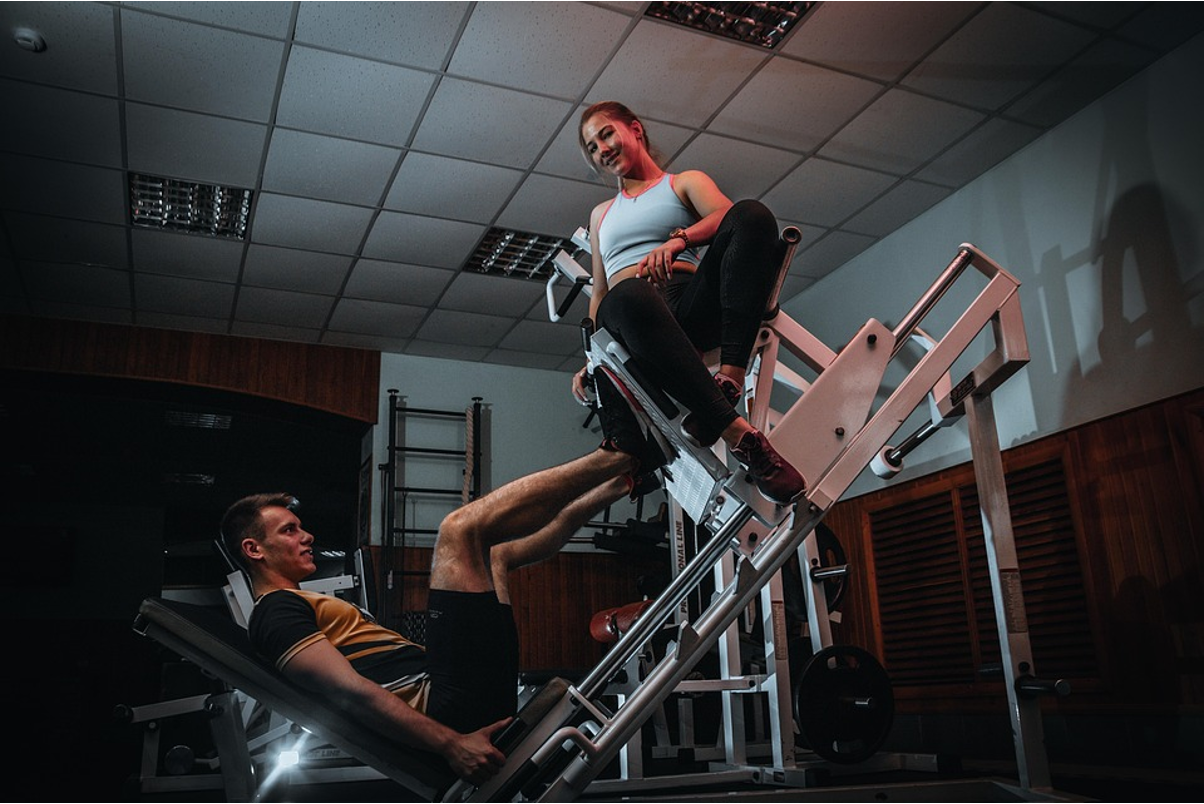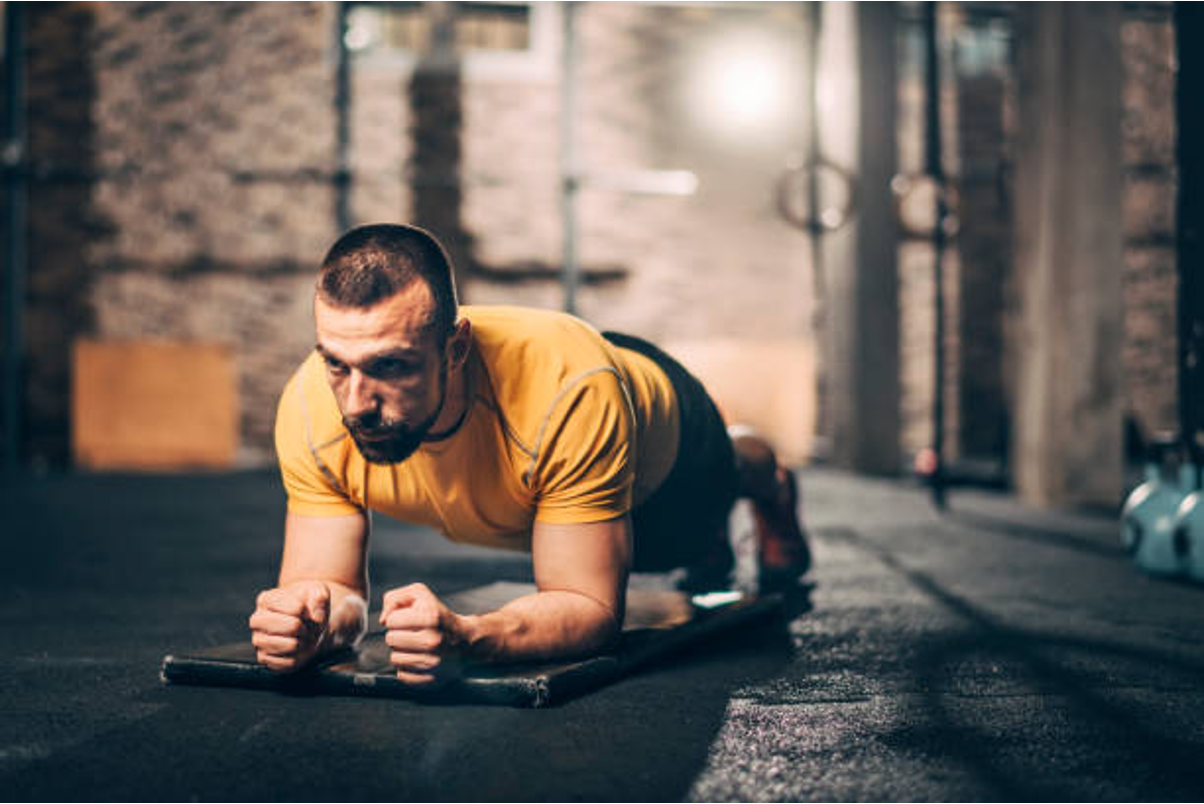Key Takeaways
- Leg presses are compound movements targeting multiple muscle groups simultaneously, while leg extensions isolate the quadriceps for focused development.
- Your foot placement on the leg press dramatically changes which muscles are emphasized—higher positions target glutes while lower positions emphasize quads.
- Leg extensions create greater quad-specific activation through constant tension and full muscle isolation compared to compound movements.
- For maximum quad development, incorporating both exercises provides complementary benefits rather than choosing just one approach.
- SOLE's adjustable dumbbells and weight bench provide versatile alternatives to machine-based leg training, supporting both compound and isolation movements for complete quad development.
Understanding the Fundamental Differences Between Leg Presses and Extensions
The battle for quad supremacy often comes down to two approaches: the leg press and the leg extension.
Both target the quadriceps but work through completely different mechanisms and deliver distinct results. Understanding these differences is crucial for anyone looking to maximize their leg development effectively.
The fundamental difference lies in their classification. The leg press is a compound movement that engages multiple joints and muscle groups simultaneously, while the leg extension is an isolation exercise that targets the quadriceps specifically. This distinction creates entirely different training stimuli and adaptations in your muscles.
Leg presses allow you to move substantial weight, which translates to greater overall lower body strength and mass development. By contrast, leg extensions create focused tension specifically on the quadriceps through a controlled, isolated movement pattern.
|
Build Your Foundation with Premium-Grade Strength Equipment! 
Why Choose SOLE Strength: ✓ Heavy-duty steel construction with rust protection 30-Day Money-Back Guarantee: Love it or return it, no questions asked. |
Leg Press: The Compound Powerhouse

The leg press creates a controlled environment for heavy loading while engaging multiple muscle groups; this makes it valuable for both strength development and overall lower body mass building.
Multi-Joint Movement: Which Muscles Get Activated
While primarily targeting the quadriceps, the leg press engages several other major muscle groups. Your glutes contract powerfully to extend the hips, while hamstrings assist in the movement. Calf muscles also activate during the press motion, especially as you approach full extension.
This multi-muscle activation creates a synergistic effect where multiple muscle groups work together to produce greater force than any could individually.
For athletes and functional fitness enthusiasts, this mimics real-world movement patterns more closely than isolation exercises.
Weight Loading Potential and Strength Benefits
The leg press's mechanical advantage allows you to handle significantly heavier loads compared to most other leg exercises. This weight-loading potential creates substantial mechanical tension, a primary driver of muscle growth.
Many experienced lifters can press 2–4 times their body weight, engaging fast-twitch muscle fibers that have significant growth potential.
The minimal stabilization requirements compared to free-weight exercises allows you to focus entirely on pushing through a full range of motion with maximal effort.
This focused exertion enables greater mind-muscle connection with the target muscles rather than dividing attention between moving weight and maintaining balance.
Progressive overload becomes straightforward on the leg press—simply add more weight as you get stronger. This clear progression path helps maintain consistent growth stimuli over time.
How Foot Positioning Changes Everything
Foot placement on the leg press platform dramatically alters which muscles receive the most activation.
Placing your feet lower on the platform increases quadriceps engagement by creating greater knee flexion and reducing hip involvement. Conversely, positioning your feet higher shifts emphasis toward the glutes and hamstrings.
A wider stance activates the adductors and inner thigh muscles, while a narrower stance increases the work done by the outer quad sweep. This versatility makes the leg press valuable for addressing specific weaknesses or aesthetic goals by simply adjusting foot positioning.
Leg Extension: Pure Quad Isolation

Leg extensions create isolation tension that forces your quadriceps to handle the entire workload without assistance.
The Anatomy of Pure Quad Activation
This isolation specifically targets all four heads of the quadriceps: vastus lateralis (outer sweep), vastus medialis (teardrop), vastus intermedius (deep middle portion), and rectus femoris (center front).
By isolating the quads from hip extension, the exercise creates unique tension patterns that compound movements cannot replicate.
Why This Exercise Creates Intense Muscle Activation
The intense sensation experienced during leg extensions comes from metabolic stress, the accumulation of metabolic byproducts during sustained muscle contraction. Unlike compound movements where muscle fatigue gets distributed, extensions focus this stress entirely within the quadriceps.
This concentrated stress pattern stimulates increased blood flow to the muscle tissue, creating effects that play a role in muscle growth by stretching muscle cell membranes and triggering growth signaling pathways.
Another factor is the constant tension throughout the movement. Even at the bottom position, your quads remain engaged, unlike compound movements where tension shifts between different muscle groups.
Common Form Mistakes That Limit Results
The seemingly simple leg extension becomes far less effective when performed incorrectly. Common mistakes include using momentum, lifting the hips off the seat to engage additional muscles, incomplete range of motion, and improper pad placement.
Each of these errors reduces the isolation effect that makes the exercise valuable. For maximum benefit, maintain strict form with controlled movement speed, full range of motion, and proper seat adjustment so the knee joint aligns with the machine's axis of rotation.
Best Applications Based on Training Goals

Your specific fitness objectives should determine how you integrate these exercises.
Mass Building: Which Exercise Builds Size Faster
When pure quad size is the goal, the leg press typically delivers faster overall mass development due to its ability to handle heavier loads. The mechanical tension created by pushing substantial weight triggers significant muscle protein synthesis pathways.
However, leg extensions offer unique benefits through constant tension and peak contraction. This constant tension maximizes metabolic stress and cellular effects, which activates secondary growth pathways that heavy compound movements might not fully stimulate.
The optimal approach combines heavy leg presses (6–10 reps) to stimulate growth with moderate-rep leg extensions (10–15 reps) to maximize metabolic stress within the muscle tissue. This combination targets multiple physiological mechanisms of muscle growth.
Sports Performance and Functional Transfer
For athletes seeking performance benefits, the leg press generally offers superior transfer to sporting movements.
The multi-joint nature more closely mimics the coordinated muscle recruitment patterns used in running, jumping, and changing direction.
Leg extensions, while less directly functional, still offer performance benefits by strengthening the quadriceps for knee extension power.
This targeted strength can improve performance in activities requiring knee extension and enhance overall knee stability during dynamic movements.
Rehabilitation and Exercise Modification
From a rehabilitation perspective, these exercises serve different purposes. Leg extensions allow isolated quadriceps strengthening with precisely controlled loads, which makes them valuable when limited weight-bearing is recommended.
The leg press becomes appropriate when greater loads and multi-joint movements are needed to rebuild functional strength. Its controlled environment allows for progressive loading while maintaining proper alignment.
Build Impressive Quads with SOLE's Versatile Strength Equipment

SOLE's strength equipment provides versatile alternatives to machine-based leg training, supporting both compound and isolation quad development through adjustable resistance and multiple exercise variations.
While leg press and extension machines offer specific advantages, SOLE's strength equipment provides versatile alternatives that deliver comparable quad development benefits.
The SW180 Adjustable Dumbbells support both compound and isolation quad training through multiple exercise variations. For compound movement benefits similar to leg presses, perform goblet squats, Bulgarian split squats, and step-ups using the adjustable weights. These exercises engage multiple muscle groups while allowing progressive overload from 5–80 pounds.
The SW116 Weight Bench enhances these movements by providing stable platforms for elevated exercises and various training angles.
For targeted quad isolation similar to leg extensions, the bench supports single-leg extensions, wall sits with added resistance, and other focused quadriceps exercises.
The precise weight adjustments allow you to match the progression capabilities of machine-based training while building functional strength that transfers to real-world activities.
If you're building mass through heavy compound movements or targeting specific quad development through isolation work, SOLE's equipment adapts to your training needs.
Our Equipment Mat provides essential floor protection during bodyweight quad exercises, while the lifetime warranty ensures your investment supports long-term training progression.
Frequently Asked Questions (FAQs)
Can I build significant quads using only leg extensions?
While leg extensions can stimulate quad development, relying exclusively on them would be limiting. Extensions excel at creating metabolic stress and targeting specific portions of the quadriceps, but they work best as a supplement to compound movements rather than as your primary quad exercise.
Is the leg press safer than squats for quad development?
For many individuals, especially those with existing back concerns, the leg press has some advantages over barbell squats while still effectively targeting the quadriceps. The supported position eliminates spinal compression and reduces technical skill requirements. However, the leg press isn't inherently safer for everyone—proper form is still essential to prevent knee stress from excessive weight or inadequate range of motion.
How heavy should I go on each exercise for best results?
Weight selection should differ significantly between these exercises. For the leg press, working in moderate to heavy ranges (typically 6–12 reps) provides optimal mechanical tension for muscle growth. With leg extensions, moderate weights with higher repetitions (12–20) typically produce better results by maximizing muscle fiber recruitment while minimizing unnecessary joint stress.
Should beginners start with leg press or leg extensions?
Beginners generally benefit from starting with compound movements like the leg press before incorporating extensions. The press movement teaches proper coordination between multiple muscle groups and establishes foundational lower body strength. After establishing basic strength and movement patterns, extensions can be introduced as supplementary work for enhanced quad development.
How can SOLE equipment provide alternatives to machine-based leg training?
SOLE's SW180 Adjustable Dumbbells and SW116 Weight Bench provide excellent alternatives to machine-based leg training. For compound movements similar to leg presses, perform dumbbell goblet squats, Bulgarian split squats, or step-ups using the adjustable weights. The bench supports various positions for unilateral leg work and different angles.







Leave a comment
This site is protected by hCaptcha and the hCaptcha Privacy Policy and Terms of Service apply.